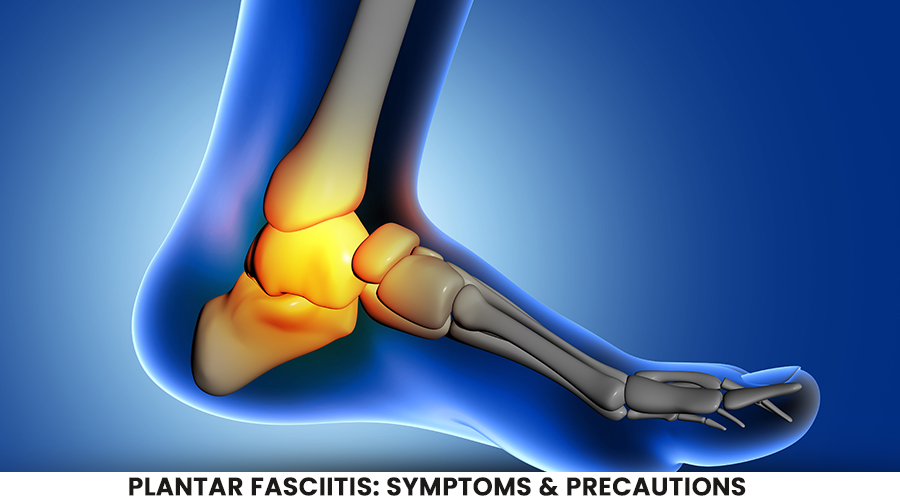Booking a visit
Working Time
- Mon-Sun 09:00 AM - 09:30 PM
Contact Info
-
Phone: +91 9545559434
+91 8855950433 - Drgsumit@gmail.com

It is very important to treat heel pain to avoid further misalignments & complications.
To know further what exactly plantar fasciitis is keep reading the article:
Plantar fasciitis is the name commonly used to mention heel or arch pain on the bottom of the foot. More precisely, plantar fasciitis is an infection of the connective tissue, called the plantar fascia, that extended from the base of the toes, across the arch of the foot where it fixes into the heel bone. Overpronation is the most usual source of plantar fasciitis. As the foot cycle inside intolerably when walking, it smoothens the foot, Drags the arch, and brings build tension to the plantar fascia. Later, this causes swelling. Pain is generally unacceptable in the morning when first getting out of bed or when sitting for extended periods.
Aspects that may increase your possibility of developing Plantar Fasciitis include:
- Age. Plantar fasciitis is most usually between the ages of 40 and 60.
- Sex. This disease is most commonly found in women compared to men.
- Certain types of exercise. Tasks that place a lot of stress on your heel and connected tissue — such as great-distance running, Toe dancing, and dance exercises such as Zumba — can give to the initial onset of plantar fasciitis.
- Faulty foot mechanics. Being unwavering, having a high arch, or even having an unusual pattern of walking can badly affect the way weight is allocated when you're standing and planting and build on stress on the plantar fascia. A tight heel cord, Achilles tendon, and decreased motion of the big toe joint also provide heel pain.
- Obesity. Excess weight put extra stress on your plantar feet.
- Professions that keep you on your feet. Factory workers, teachers, retail workers, and others who occupy most of their work hours walking or standing on hard surfaces like concrete can harm their plantar fascia.
- Improper shoes. Escape loose, boot-type shoes, as well as shoes without enough arch support or plastic padding to absorb shock. If you regularly wear high heels over 2 inches your Achilles tendon — which is connected to your heel — can shrink and shorten, causing pressure on the tissue around your heel. If your "go-to shoe" is over a year old, possibility of your foot pain would be reduced with a new pair of new shoes. Wearing the wrong shoe for your foot type can also come up with heel pain.
- There are numerous triggers for plantar fasciitis, so it's important to learn how to lower your risk. Being overweight puts extra pressure on your feet, so reducing your weight is a good idea if you fight heel pain.
- The shoes you put on can also make a big difference in how your feet feel, so secure your feet and heels with shoes that offer good support in the arch and abroad, firm heel. Don’t wear crumbled shoes; replace them when there is recognizable wear on the sole. Also, do not walk barefoot on hard surfaces.
- Physical activity will also affect plantar fasciitis. Always work out, and never hurry into new activity — take your time, and let your muscles habituate the exercise. And invest in a pair of shielded running shoes, which should be replaced always.
Simple Steps to Console Heel Pain
If heel pain is keeping you down, care for your feet a bit until they're feeling better again. To relieve the pain:
- Use an ice pack to lower swelling, inflammation, and pain.
- Rest your feet by staying off of them as much as possible for a few days when your heels are aching.
- Exercising your feet can be helpful.
If those suggestions don't help in reducing heel pain, your doctor may recommend the following treatments:
- Wearing a special tube grip at night. This helps by keeping a slight stretch of the plantar fascia while sleeping.
- Physical therapy and exercises
- Custom shoes or inserts (orthotics)
You can also consult us for Physiotherapy & Orthopaedic treatment.
